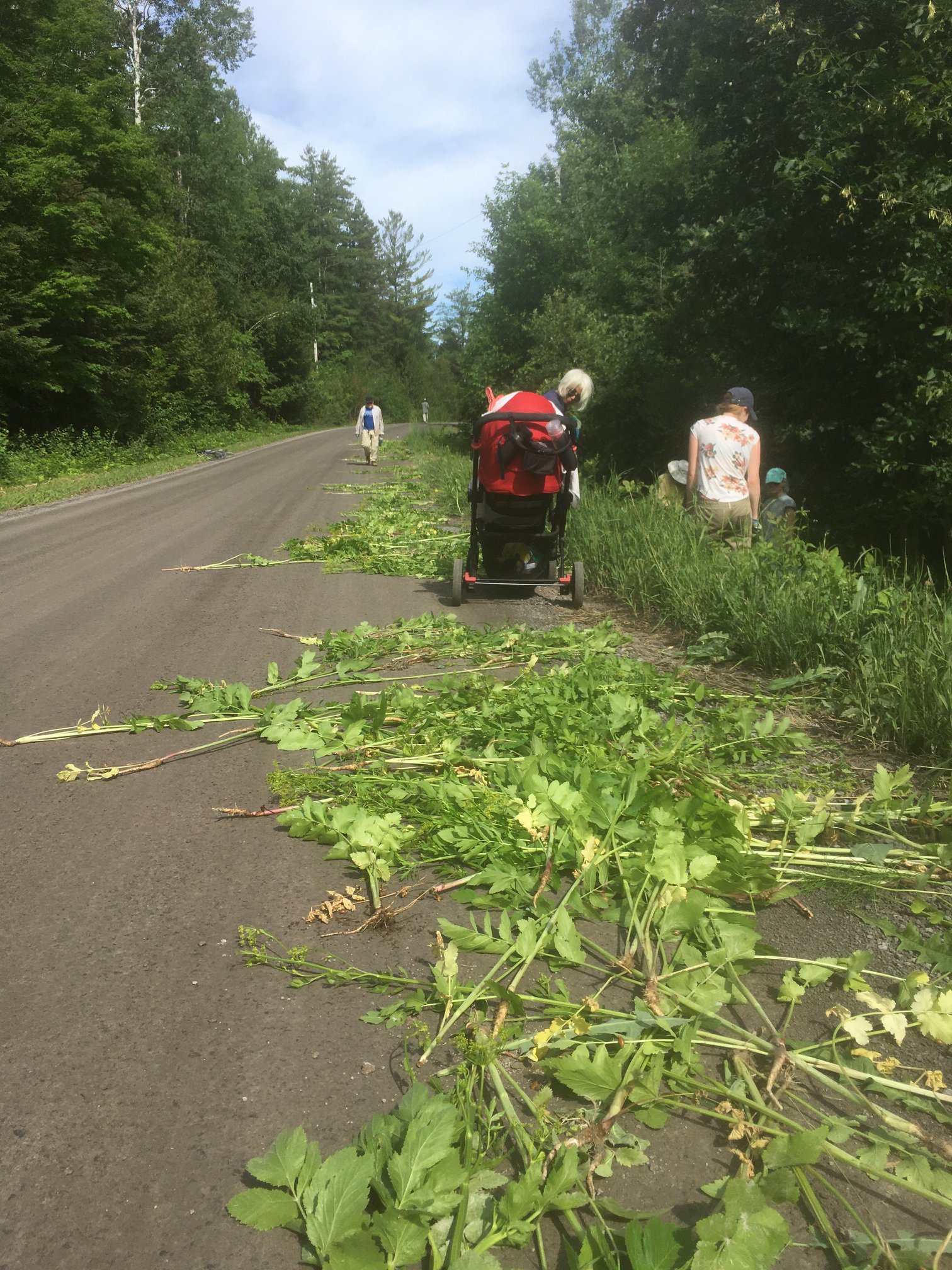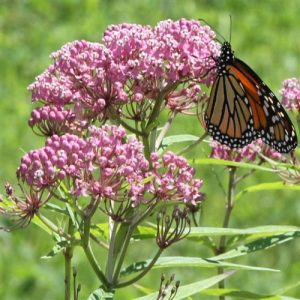based on notes by Scott Sigurdson
In May 2019, Scott Sigurdson and his neighbours on Sugar Bush Road near Pakenham, Ontario, set out to restore pollinator habit along 2 km of this country road – from the Boal Bridge (where Sugar Bush Road becomes Belamy Road) east for 2 km along Sugar Bush Road.
A donation of 16 truckloads of compost and a grader loaned to the group by the municipality got the project off to a good start.
They seeded the compost with a legume mix – clover, alfalfa, and vetch. In July, they added wildflower seeds:
| Swamp Milkweed Bebb’s Sedge Fringed Sedge New Jersey Tea Showy Tick-Trefoil Flat-topped Aster Canada Wild Rye Bottlebrush Grass Slender Wheat Grass Virginia Wild Rye Joe-Pye Weed Boneset |
Sneezeweed Common Evening-Primrose Hairy Beard-Tongue Gray Goldenrod New England Aster Common Milkweed Black-eyed SusanIn the legume plots, the mix contained Crimson Clover Hairy vetch Alfalfa |
Wild Parsnip is a problem in this area, and the volunteers did not want their new project sprayed with herbicides. That meant pulling the parsnip plants out by hand.
In summer 202o, Wild Parsnip returned, but less than in the previous year. Again, volunteers pulled the plants out by hand. Scott writes: “It took the 10 of us a little over 2 hours to remove all the parsnip. Just look at the trail of parsnip carnage we left in our wake. It will be a brave parsnip who sticks its bud out around here next year. Just 2 hours! What are you waiting for? Adopt your road and build community around it.
In 2022, the annual Wild Parsnip battle was down to only 2 hours, and in 2023, only 1.5 hours. Rain made work easier in 2023.
For more information and photos, see the project’s Facebook page.




Great project, and you are looking at at least 7 years of removing the wild parsnip (depending on seed load in soil and knowing what I know about working with Giant Hogweed and Angelica, all being in the Apiaceae (carrot family) and those seeds having a fairly long lifetime where they can still germinate in the soil.
Also I would HIGHLY recommend going straight to native plants…European plants like those in the Trifolium genus can be very allelopathic and change soil chemistry to their own “liking”, so in my opinion you are replacing one introduced invasive species with new ones that will compete for pollinators with native plants and reduce their reproductive abilities plus the competitive pressure from these: “Crimson Clover Hairy vetch Alfalfa” (no Scientific names, so I hope we are talking about the same species). I spend SO much time trying to make room along my roadside projects for the plants that are supposed to be there (you have a pretty good list)…working to dig out the vetch and clover and keep them from spreading…don’t make work for yourselves.
Go directly to native plants, and you will be filling holes in the ecology that benefit far more than pollinators but the whole system. I suggest using native species of hairgrasses too (Deschampsia), sun loving ferns, and wood rushes (Luzula spp.), wild strawberry and blue eyed grasse. These will not make the soil less friendly to the native species you are trying to establish. When you see various mushrooms, lichens, mosses, and even orchids you know you have not made the soil into something it was never meant to be.
Further, most of our plants evolved on fairly nitrogen thin soil, and in acid conditions, so it is likely you don’t need to make “garden soil”, and very little material would need to be added…”soil amendments” is a human concept and about growing vegetables (human food plants, mostly non-native introduced species). Less cost to your project, and less work. By using “conventional wisdom” human gardening practice you are using colonial “change everything” methods and you are pushing the soil to be more like…Eurasia with the best of intentions!
I cover problem areas with wood chips from native trees (mixed species felled by the power people, as those are usually healthier than arborist chips (who are often removing diseased trees)). ANYTHING you bring in or move from site to site is an invitation to problems, weeds, fire ants, jumping worms, slugs, etc. (all introduced invasive species). Let them age for a season or so while removing your invasive/introduced plants. Work with what you have…our ecology has “colonizer plants” (mentioned above) that can do as well or better than introduced clovers which push the soil to neutral…great for growing potatoes, not so much for restoring habitat.
17 years experience in habitat reconstruction in NS, just my 2 cents. But BRAVO!
Marian Bell Whitcomb
Native Plant Gardening Nova Scotia (Facebook retirement project)